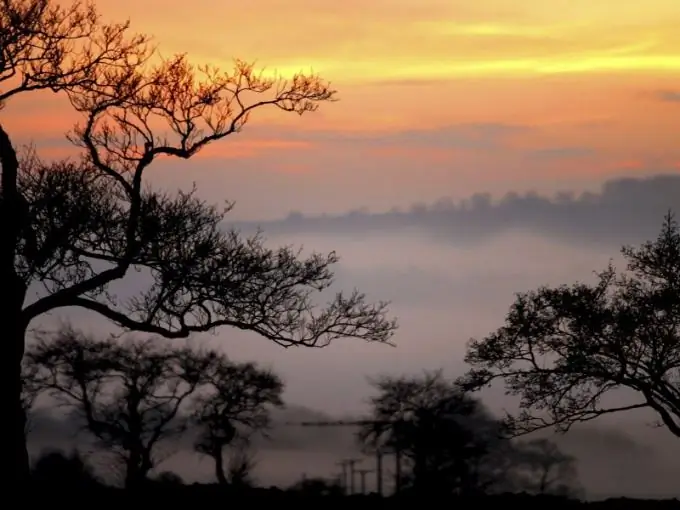In order to paint a landscape, you need to select and prepare the materials that you will use in your work, make a sketch and start applying color to the canvas.

It is necessary
- - paper or canvas;
- - pencil, eraser;
- - primer, oils for liquefaction;
- - watercolor or oil paints, gouache, pastel crayons;
- - brushes.
Instructions
Step 1
Think about what kind of painting you want to paint. You can give preference to a seascape, depict a forest, steppe, mountains or fields, paint the appearance of city streets or stay in the countryside.
Step 2
Choose paints. Watercolor is well suited for depicting nature in the morning; it will make the picture transparent and weightless. To draw water, especially turbulent water, it is better to give preference to oil paints, it is easier to give density to waves, to depict glare and foam. If you want to paint a bright autumn landscape, you can use gouache, it fits well on paper and does not fade after drying. For city streets, you can use not only the above options, but also pastel crayons. Remember that a regular sheet will not work for them; you need to purchase special textured paper.
Step 3
Prepare your work surface. If you are painting in oils, stretch the canvas and treat it with a primer, which can be purchased from an artist store. Without this preliminary work, paints can lose color, penetrate through the weave of the canvas to the back side, and crumble. If you want to create a watercolor landscape, apply enough water to the paper, be careful not to damage the surface with a hard brush. Leave to dry completely.
Step 4
Make a pencil sketch. Try not to press down on the pencil so that the lines do not show through the layer of paint. This is especially important if you plan on using watercolor for coloring. Erase the extra lines.
Step 5
Get started with paint. If you are working with gouache, make sure it is not dry. Otherwise, resuscitate it with a little water and a brush. If you are painting with watercolors, squeeze it onto a palette, check for viscosity, mix with a little water. Oil paints are the most capricious, they can only be liquefied with certain types of oils, each applied smear must dry completely. In addition, they should not be applied in a thick layer, because subsequently cracks may form on the canvas, the paint will slide under its own weight, and folds will appear.
Step 6
Start drawing from top to bottom. This will prevent the already painted details from smearing and will prevent paint dripping onto the landscape elements located below. To control the hand, set the little finger of your working hand to the side.
Step 7
Use a palette to mix colors.
Step 8
Wash and dry your brushes regularly.






